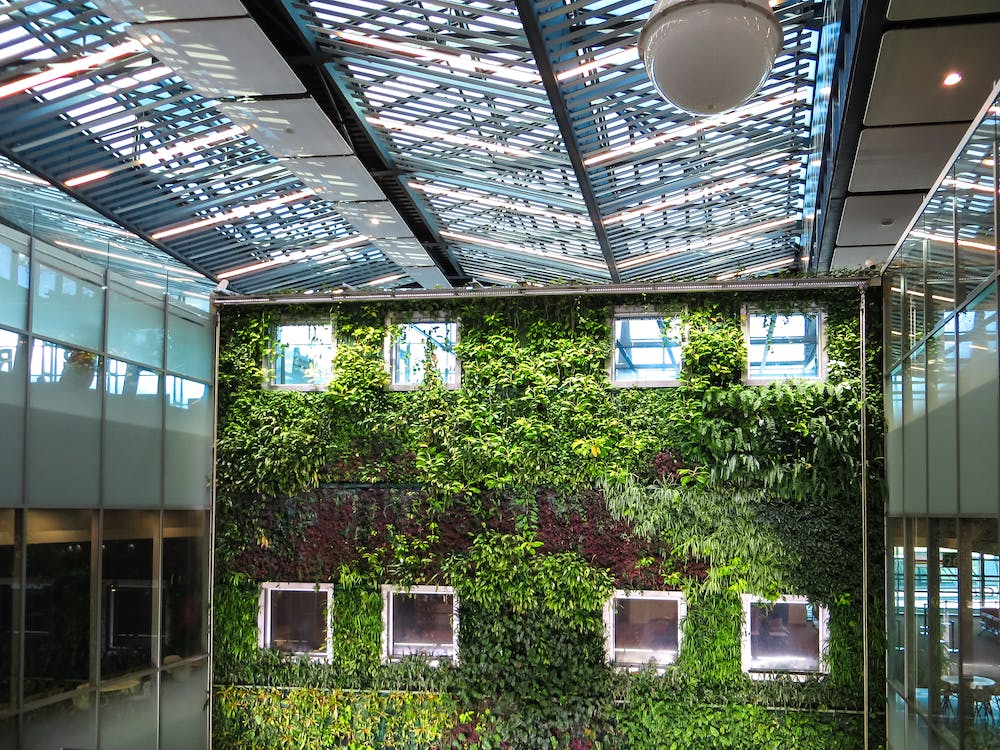The clamour for sustainability has become a rallying cry across industries, and nowhere is its impact more pronounced than in the realm of construction. Green construction, a cornerstone of the sustainable movement, has emerged as a transformative force reshaping the very foundations of how we build, design, and inhabit our spaces. In this exploration, we uncover the profound significance of green construction, unravelling its multifaceted facets and its pivotal role in shaping a more sustainable future.

The Genesis of Green Construction
Understanding Sustainable Building Practices
The essence of green construction is rooted in a profound dedication to fostering environmentally responsible and resource-efficient building practices that resonate throughout the entire lifecycle of a structure. This comprehensive commitment extends far beyond the blueprint and construction site; it forms an intricate tapestry interwoven with sustainability values that thread through every facet of the building’s existence.
At its core, green construction embodies a holistic ethos that harmonises with nature, orchestrating a symphony of elements aimed at optimising energy efficiency, reducing waste, preserving natural resources, and nurturing the health and wellbeing of both occupants and the environment. This ethos is a guiding principle, guiding the design conception, material sourcing, construction methodologies, operational functionalities, and even eventual decommissioning or repurposing stages of a building’s life.
From the initial brainstorming sessions to the ongoing maintenance and eventual end-of-life considerations, sustainability serves as the compass guiding each decision and action undertaken in the creation and sustenance of these environmentally conscious structures.
The Imperative for Change
The movement towards embracing green construction represents a response to the imperative and pressing need to address the substantial environmental footprint left by traditional construction practices. The historical trajectory of construction has been marred by a legacy of contributing significantly to carbon emissions, depleting finite resources, and disrupting delicate ecological balances.
These detrimental impacts on the environment have underscored the urgency for change. Green construction serves as a beacon of hope in this context, heralding a transformative paradigm shift within the construction industry. It marks a departure from the conventional modus operandi, aspiring to forge a more symbiotic and balanced relationship between human habitats and the natural world.
This shift is not merely a trend but a conscious effort to redefine the very essence of construction practices, fostering a future where the built environment coexists in harmony with the ecosystems it inhabits. It signifies a fundamental reorientation towards methods that not only meet the needs of the present but also safeguard the ecological integrity for generations to come, instilling a sense of stewardship for our planet within the construction realm.
Pillars of Green Construction
Energy-Efficient Design Principles
Central to the ethos of green construction is an unwavering emphasis on energy efficiency that permeates every aspect of the architectural and design process. Architects and designers, as vanguards of sustainability, wield a diverse array of innovative design strategies to orchestrate structures that operate harmoniously within their environmental context.
These professionals meticulously integrate cutting-edge techniques to harness the potential of natural elements. Their astute manipulation of natural light, strategic ventilation systems, and superior insulation practices constitute a symphony of elements aimed at mitigating the need for excessive artificial energy consumption. By ingeniously leveraging concepts such as passive heating and cooling mechanisms, where the design optimises the building’s capacity to retain or dissipate heat naturally, they transcend conventional approaches.
Additionally, their meticulous attention to efficient building orientation ensures that structures maximise solar gain during winter while minimising heat penetration during summer months. Complementing these strategies, the selective utilisation of high-performance materials further augments energy conservation efforts. These materials, renowned for their insulating properties and durability, facilitate buildings that significantly curtail their energy demands, offering not just eco-friendly habitats but also substantial cost savings over their operational lifespan.
This collective fusion of innovative design, strategic orientation, and material selection culminates in buildings that stand as exemplars of energy efficiency, redefining the benchmark for sustainable construction practices.
Sustainable Materials and Resources
The choice of materials is pivotal in green construction. Builders and architects are increasingly opting for sustainable and recycled materials that minimise environmental impact. From bamboo and recycled steel to reclaimed wood and low-impact concrete, the palette of sustainable materials continues to expand, offering durability and functionality while preserving natural resources.
Renewable Energy Integration
Green construction embraces renewable energy sources, integrating solar panels, wind turbines, and geothermal systems into building designs. These technologies not only reduce reliance on fossil fuels but also generate clean, renewable energy, powering buildings sustainably and reducing their carbon footprint.
Waste Reduction and Recycling
Efforts to minimise waste and maximise recycling are integral to green construction. Construction sites are adopting practices that reduce waste generation, salvage materials, and divert debris from landfills. The adoption of circular economy principles aims to repurpose and recycle materials, contributing to a more sustainable construction ecosystem.

Green Construction in Practice
Iconic Examples of Sustainable Buildings
From the Bosco Verticale in Milan, Italy, to the One Central Park in Sydney, Australia, numerous iconic structures stand as testaments to the potential of green construction. These buildings seamlessly blend architectural elegance with sustainable features, showcasing the possibilities of marrying aesthetics with environmental responsibility.
The Evolution of Green Rating Systems
Green building certification systems, such as LEED (Leadership in Energy and Environmental Design) and BREEAM (Building Research Establishment Environmental Assessment Method), have emerged as benchmarks for evaluating a building’s sustainability. These rating systems incentivize and recognize projects that prioritise environmental performance, providing guidelines and standards for green construction practices.
The Future of Green Construction
Technological Advancements Shaping the Industry
The ongoing wave of technological advancements within the construction industry is heralding a profound revolution in the realm of green construction. This transformative era, driven by cutting-edge innovations, is reshaping the very foundations of how sustainable buildings are conceived, designed, and constructed. Among the arsenal of technological marvels, Building Information Modeling (BIM) stands as a linchpin, offering architects and designers an unprecedented level of precision and foresight in the planning and execution of sustainable structures. This sophisticated tool transcends traditional two-dimensional blueprints, providing a three-dimensional digital representation that integrates vital information, streamlining collaboration, minimising errors, and optimising resource utilisation from the project’s inception to its fruition.
Moreover, the integration of augmented reality (AR) and artificial intelligence (AI) marks a pivotal juncture in the evolution of green construction. AR technologies offer immersive experiences, allowing stakeholders to visualise and interact with designs in real-time, fostering a deeper understanding and engagement throughout the project lifecycle. AI algorithms, on the other hand, analyse vast datasets and simulations, providing valuable insights and recommendations that enhance design efficiency and environmental performance. These technologies converge to empower architects and designers, enabling them to fine-tune sustainable designs with unprecedented accuracy and foresight.
Beyond the design phase, the implementation of advanced monitoring systems and Internet of Things (IoT) devices orchestrates a symphony of functionalities within sustainable buildings. These IoT devices, embedded within structures, facilitate a network of interconnected systems that continuously collect and analyse data, optimising building performance in real-time. From monitoring energy usage and indoor air quality to regulating temperature and lighting based on occupancy patterns, these systems fine-tune building operations for maximum efficiency and occupant comfort. Furthermore, these systems pave the way for predictive maintenance, proactively identifying potential issues before they escalate, ensuring seamless functionality and durability of sustainable buildings.
The amalgamation of these technological marvels isn’t merely a leap in innovation; it’s a transformative shift that propels green construction towards unprecedented realms of efficiency, accuracy, and sustainability. These advancements serve as catalysts, empowering stakeholders within the construction industry to envision, design, and construct buildings that not only reduce their environmental footprint but also offer enhanced comfort, functionality, and adaptability for occupants. As technology continues to evolve, its symbiotic relationship with green construction augurs a future where sustainable buildings aren’t just efficient and eco-friendly but are also intelligent, responsive, and resilient in harmony with the needs of both humanity and the environment.
Sustainable Communities and Urban Planning
The scope of green construction extends beyond individual buildings to encompass community planning and urban development. Concepts like green spaces, pedestrian-friendly designs, mixed-use developments, and efficient public transportation are integral components of sustainable communities, fostering a more holistic approach to sustainable living.
The Global Push Towards Net-Zero Buildings
The aspiration for net-zero buildings, which produce as much energy as they consume, represents the pinnacle of sustainability in construction. The global commitment to achieving net-zero emissions has spurred ambitious goals and initiatives to transition towards carbon-neutral buildings, paving the way for a carbon-free future.
Challenges and Opportunities
Overcoming Barriers to Adoption
Despite its promising trajectory, green construction faces challenges in widespread adoption. Cost implications, lack of awareness, regulatory hurdles, and resistance to change within the industry pose barriers that need to be addressed. However, as technologies advance and awareness grows, the cost differentials between traditional and green construction are diminishing, opening doors to broader acceptance.
Educating and Empowering Stakeholders
Education and awareness play a pivotal role in fostering a culture of sustainability within the construction industry. Empowering stakeholders with knowledge about the benefits of green construction, disseminating best practices, and advocating for supportive policies are critical steps towards accelerating its adoption.
Charting a Sustainable Path Forward
The ascendancy of green construction heralds a new era in the evolution of the construction industry. It’s not merely a trend but a fundamental shift towards creating spaces that not only serve human needs but also respect and harmonise with the environment. The legacy of green construction extends beyond individual structures; it represents a collective commitment to safeguarding our planet for future generations.
As we navigate an era marked by environmental challenges and aspirations for a sustainable future, green construction stands as an emblem of hope and progress. It embodies the ethos that buildings aren’t just bricks and mortar; they’re reflections of our values, aspirations, and stewardship of the planet.
As technology improves and new developments emerge tools like Wunderbuild will play a crucial role in ensuring you provide the highest quality in building and construction. Wunderbuild offers smart project management and collaboration features, enhancing productivity, and facilitating smooth workflow in construction projects. Harness the power of modern construction software to stay ahead in this evolving industry. To learn more about what Wunderbuild can do for your projects, click here.



